Global Stock Indices Decline Amidst Robust US Services Data, Dollar Hits Six-Month High | Daily Market Analysis
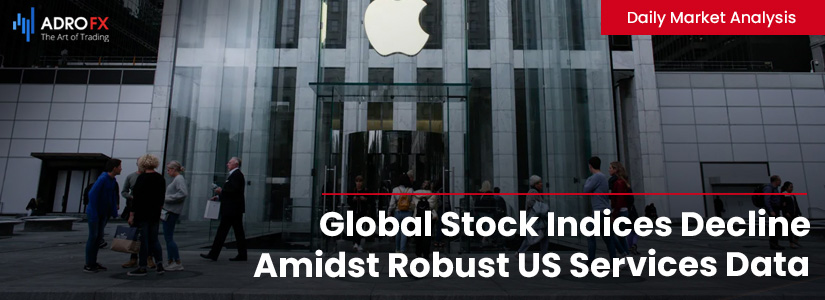
Key events:
- USA - Initial Jobless Claims
- USA - Crude Oil Inventories
On Wednesday, global stock indices faced a decline, while the benchmark US Treasury yield saw an increase, and the US dollar reached a six-month high. This was prompted by robust US services sector data, which suggested that inflation pressures are persisting.
The impact was particularly felt on Wall Street, where the shares of tech giant Apple (NASDAQ: AAPL) tumbled by 3.6%. The Wall Street Journal reported that China had banned officials at central government agencies from using iPhones and other foreign-branded devices for work.
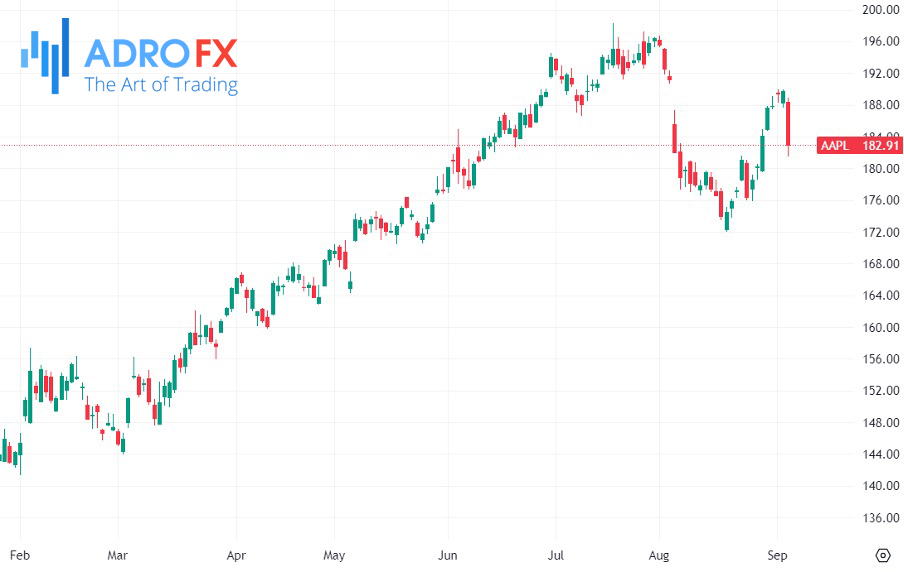
The Institute for Supply Management (ISM) reported a rise in its non-manufacturing Purchasing Managers' Index (PMI) for August, indicating that new orders were strengthening and businesses were paying higher prices for inputs. Some investors interpreted this data as a sign that interest rates might remain elevated for a longer duration. Nevertheless, the US Federal Reserve is still expected to maintain its pause in rate hikes during its upcoming meeting later this month.
In addition, Fed Bank of Boston President Susan Collins emphasized the need for caution in the central bank's next monetary policy steps, despite signs of progress in cooling inflation.
As a result of these developments, the Dow Jones Industrial Average dropped by 198.78 points, or 0.57%, to 34,443.19, the S&P 500 lost 31.35 points, or 0.70%, to 4,465.48, and the Nasdaq Composite declined by 148.48 points, or 1.06%, to 13,872.47.
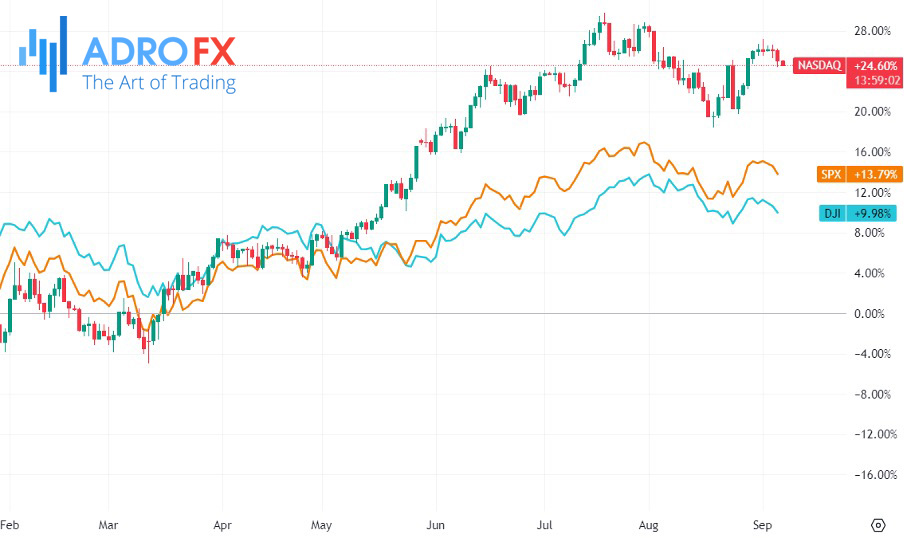
Today European stock markets are anticipated to open lower. This sentiment arises from fresh indications of slowing growth in Europe and China, coupled with concerns about future tightening by the Federal Reserve.
German DAX futures fell by 0.3%, CAC 40 futures in France dropped by 0.3%, and the FTSE 100 futures contract in the UK fell by 0.2%. Earlier data revealed a 0.8% month-on-month decline in German industrial production for July, exceeding expectations of a 0.5% drop. This adds to a series of data releases indicating that the largest economy in the eurozone is facing challenges and may be at risk of slipping back into recession.

Furthermore, China's exports and imports contracted in August, with exports falling by 8.8% year-on-year and imports declining by 7.3%. While these trade numbers surpassed expectations, they underscore the ongoing pressure on China's manufacturing sector, emphasizing the need for policymakers to focus on boosting domestic demand to support growth. China's economic performance is of particular significance to Europe's largest companies, and its ongoing struggles continue to impact their financial results.
The Bank of Canada (BoC) made the widely expected decision to maintain its policy rates unchanged during its recent interim meeting. While acknowledging a reduction in excess demand, the BoC left the door open for potential future rate hikes. The central bank expressed concerns regarding the persistence of underlying inflation pressures. Overall, the communication from the BoC leaned towards a more hawkish stance, noting the absence of recent downward momentum in underlying inflation and highlighting the risk that elevated inflation could become entrenched.
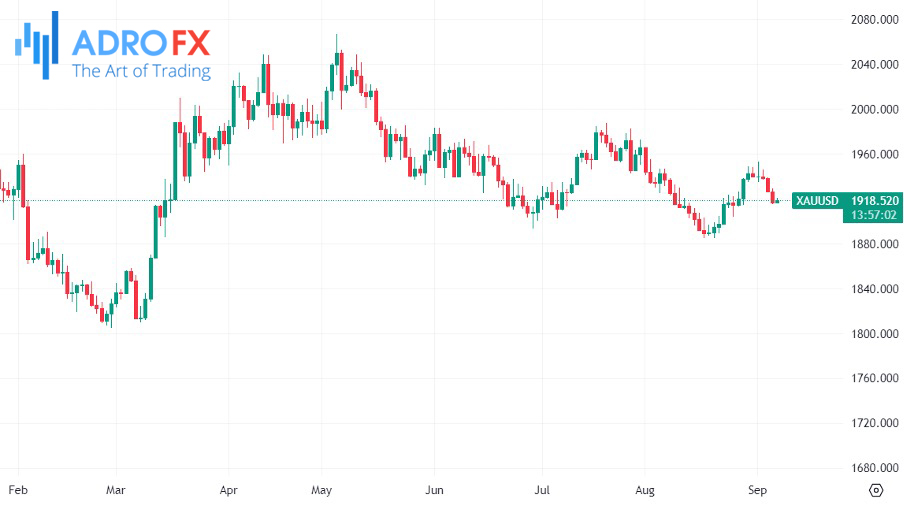
On Thursday, gold prices remained relatively stable, with some downward pressure attributed to the strength of the US dollar and Treasury yields.
The dollar index reached a new six-month high at 105.03 and was last trading at 104.85, marking a 0.1% increase. Meanwhile, the euro made slight gains, rising by 0.03% to $1.0723.
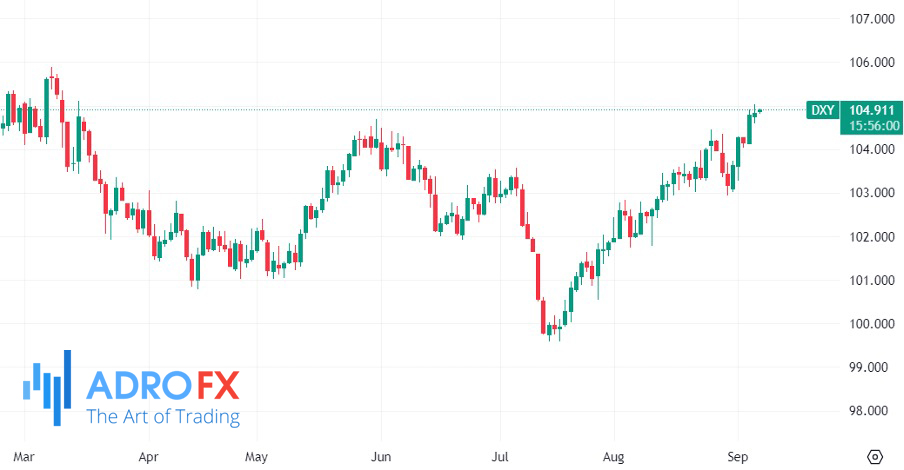
In contrast, oil prices experienced a reversal of earlier declines and finished the day with gains. This was driven by trader expectations of further reductions in US crude oil inventory.
Brent crude futures settled at $90.60 a barrel, marking an increase of 56 cents, while US crude futures settled at $87.54, reflecting a gain of 85 cents.
Looking ahead, the most significant data release for today is the euro area wage figures, specifically compensation per employee for Q2 2023. This particular wage measure is favored by the European Central Bank (ECB), and the release carries substantial importance as it serves as the last significant data point before the upcoming ECB monetary policy meeting scheduled for next Thursday.









